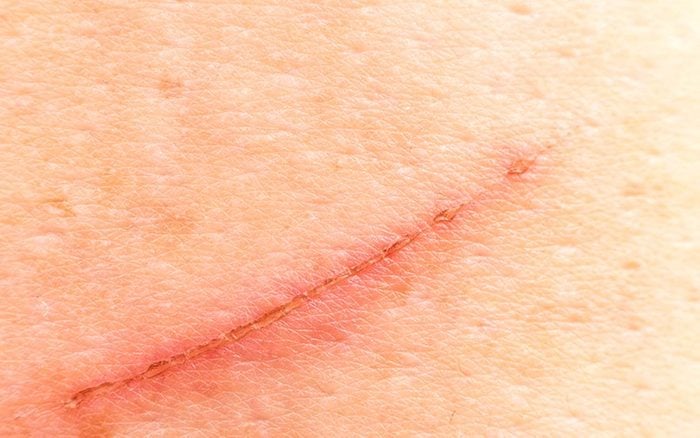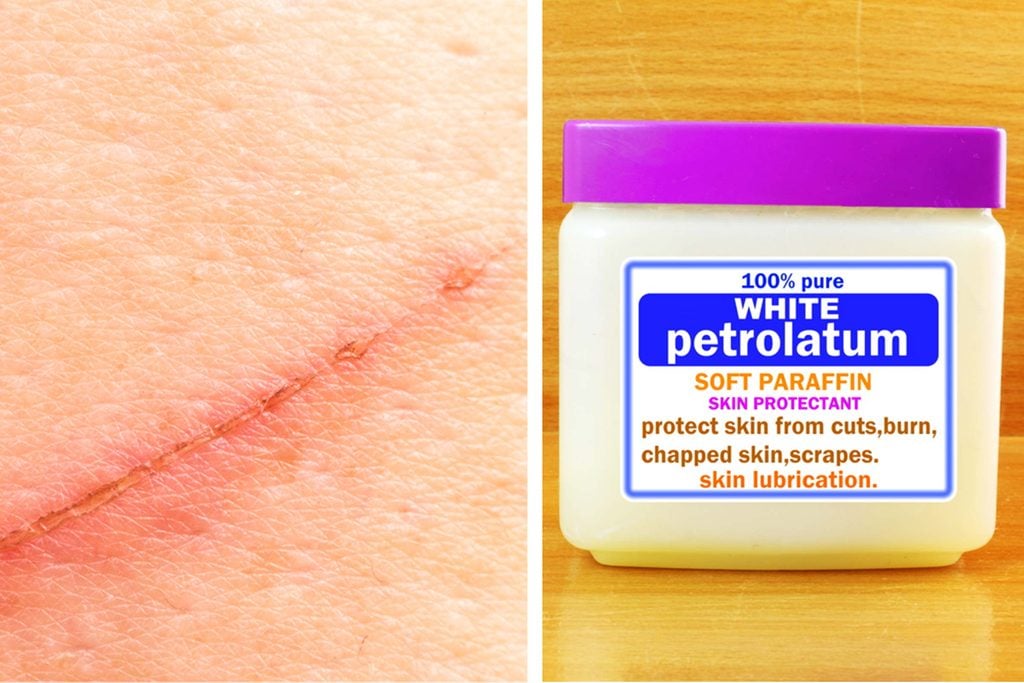The Secret to Preventing Scars Is This One Ingredient (Hint: It’s Not Neosporin!)
Updated: May 13, 2021

The best way to prevent scarring is super-simple—no special creams, prescription drugs, or even doctor visits required.
Even if you’re not above making common first aid mistakes, there’s a super-simple way to prevent scarring from a cut, scratch, gash, or other relatively minor wounds.
As a wound heals, a scar may form, and how big it is, depends on how well it heals. The good news is that scars from minor injuries can definitely be minimized with proper treatment, according to Rebecca Lee, RN, a nurse from New York City and founder of the natural health source RemediesForMe.com.
 The first step, advises Lee, is to stop the bleeding and make sure the wound is clean. Running water and mild soap is all you need to clean your cuts and wounds, remove any debris, and minimize bacteria. Make sure your hands are clean before you start. Despite the advice you may have heard growing up, don’t be tempted to clean the wound with hydrogen peroxide. While it’s a great antiseptic and bacteria killer, it should not be used on cuts and wounds because it disrupts tissue growth and delays healing.
The first step, advises Lee, is to stop the bleeding and make sure the wound is clean. Running water and mild soap is all you need to clean your cuts and wounds, remove any debris, and minimize bacteria. Make sure your hands are clean before you start. Despite the advice you may have heard growing up, don’t be tempted to clean the wound with hydrogen peroxide. While it’s a great antiseptic and bacteria killer, it should not be used on cuts and wounds because it disrupts tissue growth and delays healing.
The next step is to apply a thin layer of petroleum jelly or Vaseline over the wound, to keep it moist and create an occlusive layer—that means it locks moisture in, which prevents the skin from drying out. As a backup, you could use Aquaphor, which contains 41 percent petroleum jelly. The benefit of a semi-occlusive barrier over the skin is that it lets water and oxygen get to the wound, which is beneficial for healing and scar prevention. (Here are more great uses for petroleum jelly you might not be aware of.)
“Wet environments greatly support wound healing by encouraging new skin growth—epithelialization—and preventing dehydration and cell death,” explains Lee. “Wounds that are dried out take longer to heal and can get deep and itchy.” This is backed up by a review of clinical findings regarding treatment of wounds in a moist or wet environment, published in the journal Advances in Wound Care.
After applying petroleum jelly to the wound, cover it with a Band-Aid (or gauze and paper tape if you’re allergic to adhesives). It’s important to keep cuts and wounds covered, says Lee, because this keeps them clean, prevents dehydration, and creates a protective barrier between the wound and the external environment, even your clothing. If you don’t cover a wound and it dries out, it can lead to crusting and scab formation, which delays the healing process and is more likely to result in a scar.
To aid the healing process, Lee recommends cleaning the wound daily with soap and water, then reapplying petroleum jelly or Aquaphor, and adding a fresh Band-Aid. And if you’re wondering: Does Neosporin prevent scars? The answer is no, not directly. As long as wounds are cleaned daily, there’s no need for antibacterial ointments or other special creams. Next, try these tips to speed up the healing process so you can get rid of that scab.